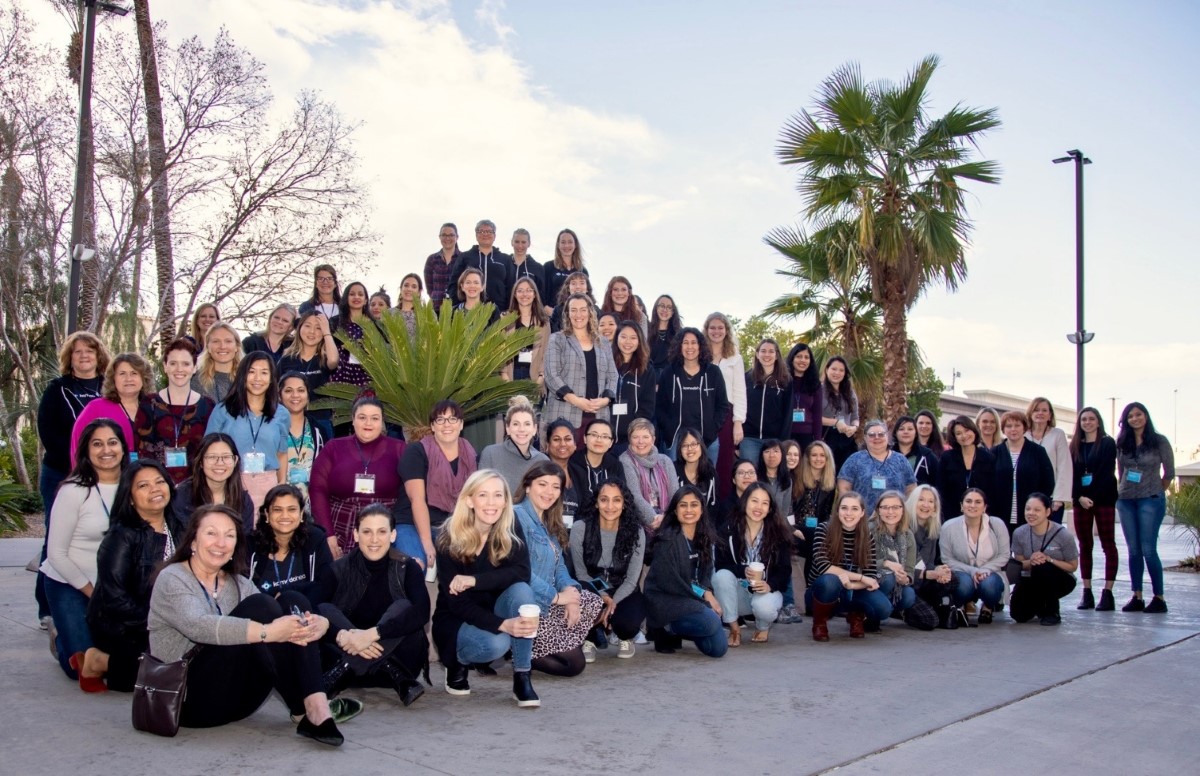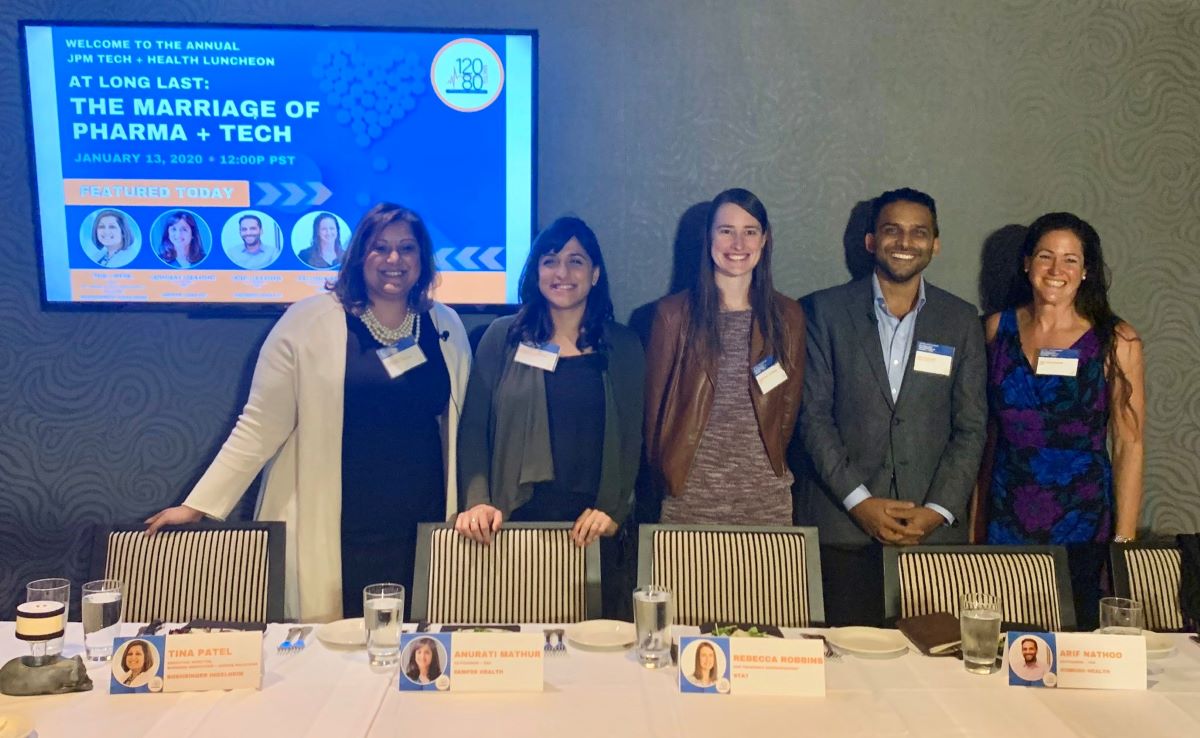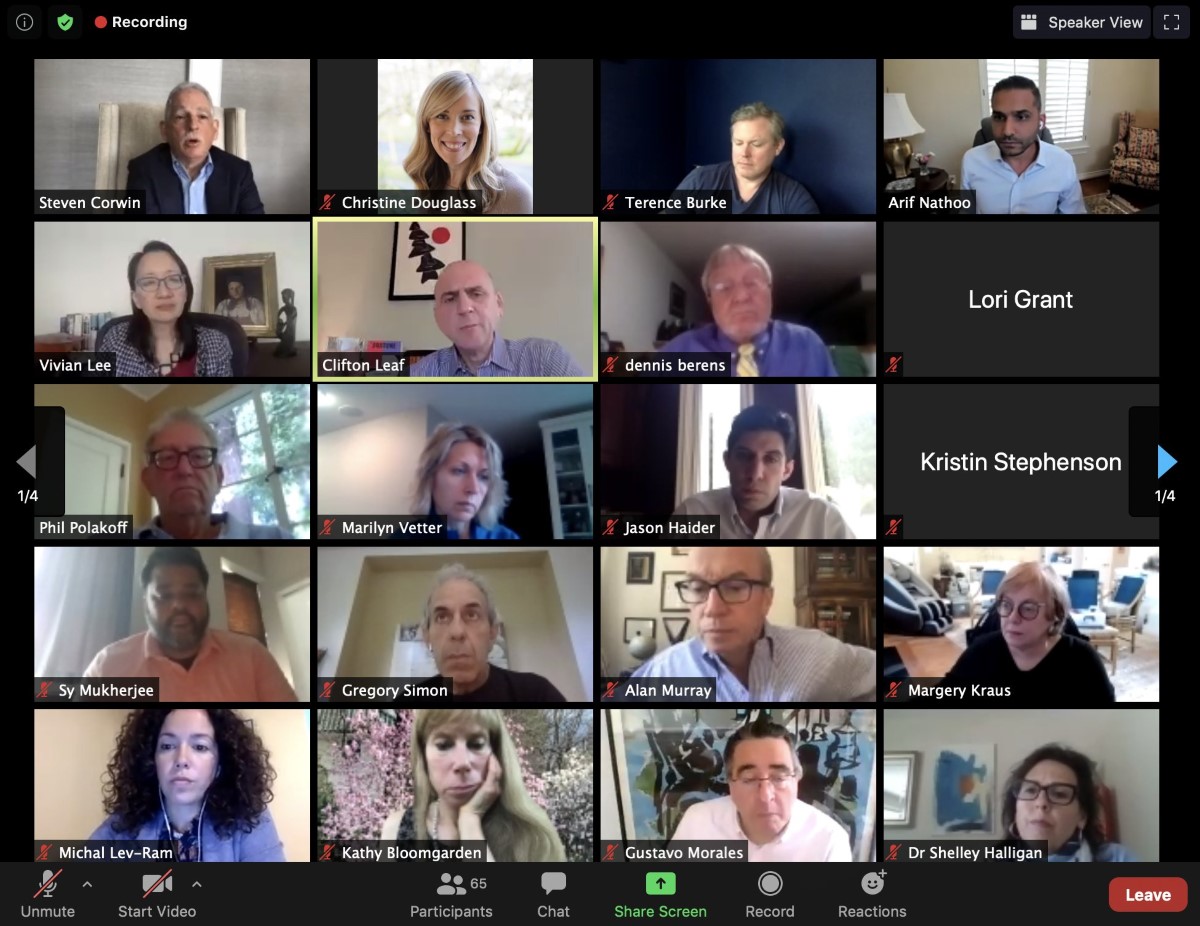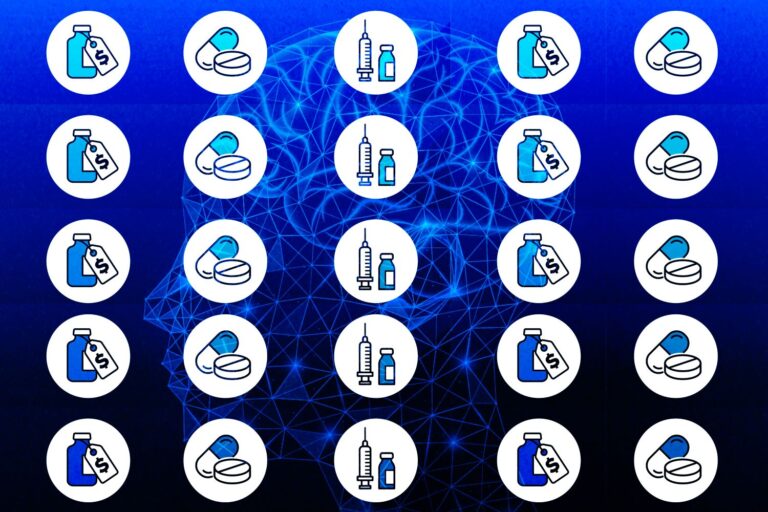Business Insights behind Komodo Health’s Powerful Spectrum of Healthcare Map
Founded in 2014, Komodo Health develops computer software that brings transparency and market intelligence to healthcare and life sciences. The company combines the world’s most comprehensive view of patient encounters with innovative algorithms and decades of clinical expertise to power its Healthcare Map, the industry’s most precise view of the U.S. healthcare system. In doing so, it empowers a multitude of healthcare stakeholders life science companies, healthcare payers and providers, patient advocacy groups, and others to create a more cost-effective, value-driven healthcare system.
One of the distinguishing features of Komodo’s performance is that the company obtains data through a diverse network of commercial payer partnerships. Through its extensive access to payer-complete data, Komodo provides higher-resolution and richer insights into the patient journey, including clinical encounters that are typically missed by traditional “pill-tracking” data aggregators. With the Healthcare Map as its foundation, the company offers a suite of powerful software applications that enables its customers to deliver exceptional value.
According to the company, in every fairy tale, there’s always a proverbial “dragon” that the protagonist needs to overcome in order to emerge victoriously. But dragons in stories are often misunderstood – feared instead of revered. When the power of the dragon is harnessed, heroes are born, quests are triumphant, and the ending is always a happy one. Given the importance, and difficulty of its mission, the company named itself after the last living dragon – the Komodo Dragon – recognizing that it will take the power, wisdom, and just a touch of magic that only a dragon can provide, for the company to successfully achieve its goals.
A Joint Effort Based on the Industry Insight
In this age of technological advancements, no field is escaping the touch of innovation. The healthcare space has a lot to show in terms of the influence of technology and Komodo is one typical example of the correlation between data technology and the health sector. At the steering wheel of the company is the company’s co-founder Arif Nathoo who oversees data sciences, engineering, and product development initiatives for the company.

He has spent the past 15 years devoted to healthcare and life sciences leadership roles. Before Komodo, Arif was a leader in McKinsey’s Healthcare practice where he was responsible for helping enterprise healthcare address issues in corporate strategy, finance, sales and marketing, and organization building. He had a relationship with the company for seven years until he went independent as a senior advisor.
“By way of background, I’m an MD and spent years working with enterprise healthcare companies on a variety of problems. One of the things that I observed in 2014 was that patient-level data was being transformed and made available in many formats, but systems to collect and link it weren’t there. There was so much focus on interoperability and getting systems to talk to each other, but there was less focus on how to transform the disparate data and gather insights on a larger scale,” said Nathoo.
In his opinion, the biggest challenge at the time is that nearly no one figured out how to create systems where that information is plugging right into streams of data, and then driving predictions in real-time. To solve that, Nathoo went on to cofound Komodo with his partner Web Sun after learning valuable insights from his working time at McKinsey. In 2014, their company came to be.
The company came through to map individual health identities. The health mapping field receives its inspiration from the data science field, a growing field that is the basic unit of predictive analytics, which helps in understanding the spread of diseases in a particular community. Over the past few years of its existence, Komodo has gone through a phase of expansion. Now, it addresses hundreds of use cases across payers, providers, and life sciences that are all centered on the notion that if we can really understand and study populations at scale, we can make better decisions on how to address their unmet needs.
As Nathoo advised, if you really want to impact population health, you need to think on a scale that spans the entire U.S. population and get really fascinated by the opportunity. Komodo was born amid the rise of data analytics and the cloud when nobody was really doing its work yet. The co-founders built the company around the thesis that robust data-driven insights will allow them to reduce disease burden at scale. Komodo is a full-stack technology company so it goes all the way from data through to analytics, AI, and software. This full-stack thesis is what they have heavily invested in.
“This touches on the idea of healthcare disparities and the way we think about where the disease burden is higher or lower, and all of this informs the way we actually engage the market to drive solutions. There is a whole loop that goes from analysis of those unmet needs to what actions you can take against them to the measurement of these outcomes,” said Nathoo.

Focused on Health Equity with Demographic Characteristics
According to Nathoo, One of the most difficult aspects of de-identified data is that there is a limit to the number of markers that can be used to keep it de-identified, and he strongly believes in the power of de-identified data. The challenge in doing health equity research is being able to link information derived from “social determinant data” to healthcare data from a patient and to do it in a way that is consistent with de-identification principles. Nathoo found it’s difficult to get that data enriched in a way that allows Komodo to perform really high-quality health equity research.
“So we started working through a data certification process that allowed us to understand care disparities at a de-identified patient level, and then made a big effort to expand our schema to include characteristics like race and ethnicity and other social demographic characteristics of a patient and their environment. We also ensure it still meets the standards for de-identification,” Nathoo said.
To his mind, the problem today is that everyone is waiting for some magical analysis or data set, but it takes time to cobble together a meaningful understanding of patient outcomes. As he explained, “It requires the ability to do it in a compliant and de-identified way so that you can make great policy decisions without revealing patients. We’ve spent a lot of time curating our process, and reconciling, for example, race and ethnicity data across hundreds of different sources so we can understand a patient’s demographic traits. Through this process, we’ve built up what I think is a very powerful data set that allows people to study disparities on a different scale.”
The Komodo team is first and foremost focused on developing data structures that will allow them to conduct population-level research. They then use this information to determine the vast unmet needs of populations. For instance, the company has published a couple of research briefs that look at issues in care disparities. It started to see patterns emerge during the pandemic in the way patients are handled, doing a big study around hospital admissions. These are really important findings for folks that are operating a healthcare system or payer level to understand the needs of their populations to provide better care.
“I should also say, while powerful analytics like this are important to better pinpoint gaps in care and direct strategies to close those gaps, there’s also a false belief that because we have the technology, we can reduce disparities in care, but that’s not true. Those with access to the data must make a deliberate effort to act on these insights and reach out to communities that are underserved. And where data is powerful is in identifying those communities. Then you are responsible for really thinking about how you go and address them, build trust, or establish programs, and that’s what we at Komodo do with our clients,” said Nathoo.

Gaining Lessons from the Last Remarkable Year
The year 2021 marked the beginning of the world’s recognition of the monumental difficulties that healthcare faces, as well as the great capacity that technology has to address them. Despite the numerous challenges that the Komodo Health team has faced, the company has produced extraordinary results for its clients, partners, and each other, allowing the company to continue to grow its impact across healthcare amid the ongoing pandemic. Let’s keep reading to learn what co-founders Arif Nathoo and Web Sun shared about how they reached their success in the last incredible year because maybe you can take some important lessons away.
#1. Increase Influence
The co-founders have soon realized that Komodo’s mission of reducing the burden of disease is one that can only be realized by growing its impact and they have done a very good job since the company’s inception. Last year, they continued to build on the strong foundation of rapid business expansion with a client roster across the healthcare and Life Sciences industries. Investments through the acquisitions were considered to play an important role in extending the company’s market impact, bringing its Healthcare Map together with leaders in enterprise software, medical affairs, patient services, and market access. Additionally, strategic partnerships with patient advocacy groups have become more and more critical to Komodo, and it goes the same with any today’s health company.
#2. Embrace Innovation
Pushing the limits of what’s possible with new product development and expansion of software to incorporate new data features, enterprise integration capabilities, and improved user experience is what Komodo has done across its solution suite. In 2021, the company expanded its software capabilities across all segments of its business, and developed solutions to unlock insights based on detailed patient behaviors and treatment patterns with an unprecedented level of precision, ease, and flexibility. We continually added to the depth, breadth, and diversity of our Healthcare Map data to ensure our position as the industry’s most comprehensive foundation for de-identified, real-world patient insights.
#3. Foster Culture
According to the co-founders, Komodo also invested heavily in its people, making sure our core values be at the center for its growing team, all amid ongoing challenges associated with the pandemic and hypergrowth. The organization has always made sure that its teams are led by executives with the expertise and skills required for them to realize their outsized ambitions. Over the last year, it launched three new affinity groups, established new Learning & Development initiatives, announced its new flexible working model to ‘make work work’, and created virtual communities and activities to ensure all employees feel supported and encouraged.
#4. Move Ahead
“Regardless of how the pandemic has impacted you personally, it’s safe to say this experience has brought our mission very close to home for all of us,” the co-founders looked back. “We are making amazing progress, possibly even making history along the way. But, there is still so much left to be done. Like any pivotal moment in history, the individual choices and contributions we make today will play a critical role in driving better outcomes tomorrow. It’s powerful and humbling to see how far we’ve come, both this year and over the last seven. As we move forward in this journey, it will be important that we never lose sight of what is at stake and the focus of our mission.”

Fitting into the Healthcare Ecosystem in a Long Run
Arif Nathoo and Web Sun, together with their team, started Komodo as a classic application company, and they have built enterprise applications for large life sciences companies, payers, and providers. Then they realized through the company’s Healthcare Map that creating instrumentation on that map can make it possible for anyone to study any cohort of patients at any time. According to Nathoo, that’s really where the power is for the market. He believes the company’s future is in democratizing access to deep insights on populations that allow anyone to address the disease burden.
“As more businesses and more research are built on Komodo, we start to see ourselves less as a technology provider that controls access to our own applications, but one that is really open for the entire ecosystem to engage and work with us to drive their innovations. And we’re really excited because we haven’t really seen access to a healthcare map of our size be made available to as many people as possible, and we want a world where data is easy for people to work with,” said Nathoo.
Komodo is seen as a very mission-centric company, reducing disease burden and health inequities is exactly where the company tends to go because it’s the reason behind everything, in Nathoo’s opinion. Over the past few years, the company has embraced the opportunity to drive meaningful change and it’s looking forward to continuing to play a leading role in healthcare’s transformation in the future. As Nathoo admitted, there are still so many gaps in the healthcare industry, and so there are chances to do some more things about it with data and technology.
The Bottom Lines
As we can see, Komodo Health has been really devoted to using its innovative technology platform to help reduce the global burden of disease, extending its pioneering position as the insights backbone for the whole industry. The company’s success today seems to power the next generation of entrepreneurs diving into machine-learning innovation in the healthcare space.









